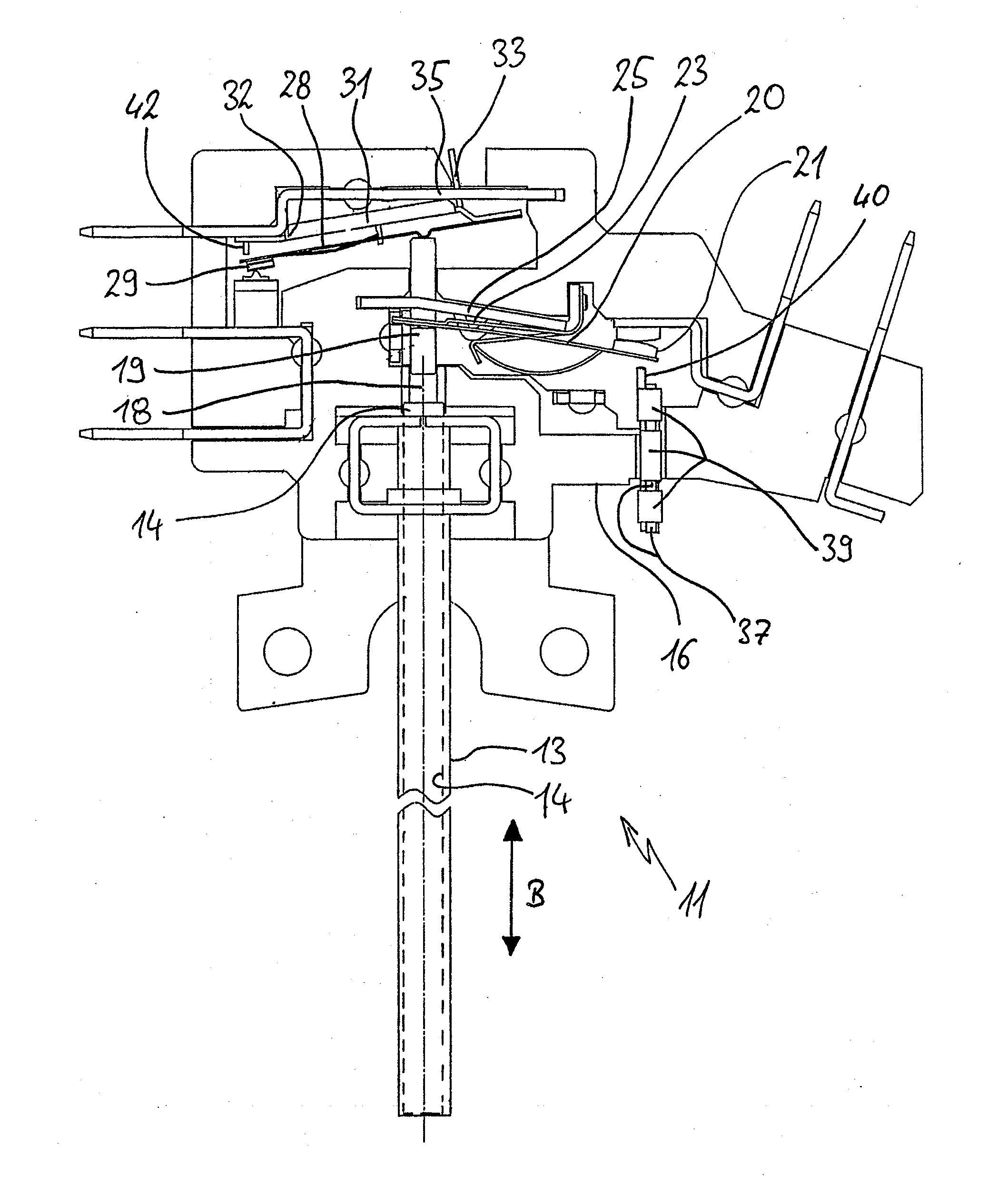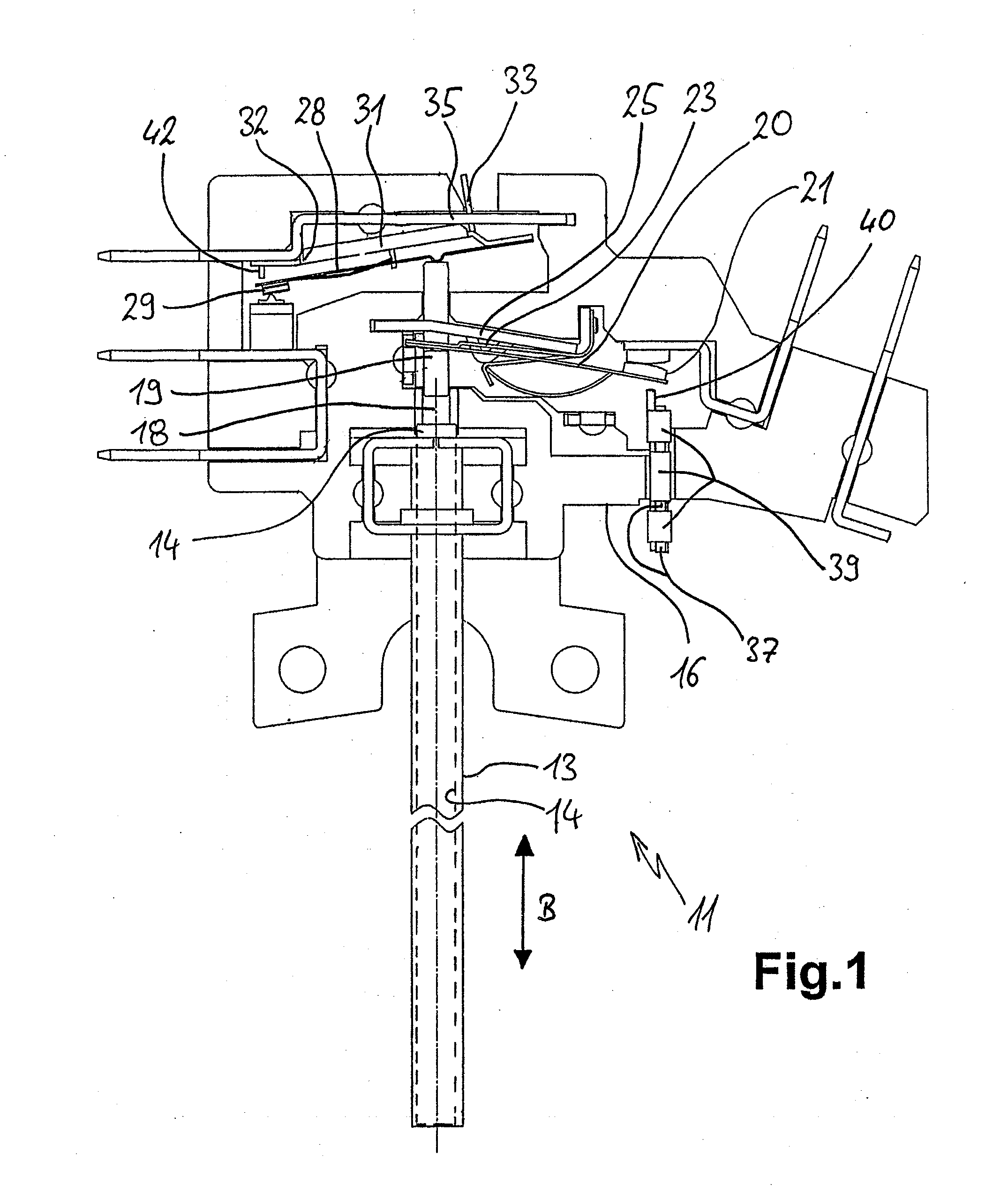Temperature sensor and method for adjusting such a temperature sensor
a temperature sensor and temperature sensor technology, applied in the field of temperature sensors, can solve problems such as inability to solve in a very simple manner, and achieve the effect of improving adjustability and switching accuracy
- Summary
- Abstract
- Description
- Claims
- Application Information
AI Technical Summary
Benefits of technology
Problems solved by technology
Method used
Image
Examples
Embodiment Construction
[0022]FIG. 1 shows a sectional plan view of a temperature sensor 11 according to the invention with an elongated sensor part which consists, in a known manner, of a tube 13, usually a metal tube, and an elongated rod 14, usually a ceramic rod, contained in said tube. In the case of temperature fluctuations, the tube 13 and the rod 14 undergo different linear expansions in their longitudinal direction, thus resulting in a relative movement in the direction of movement B. Since the lower end of the rod 14 is either pressed into the tube 13 with a spring force acting from above or is even fixed, for example clamped, in said tube, a longitudinal movement results at the upper end of the two parts. The tube 13 is fastened to a housing 16 of the temperature sensor 11 in a manner known per se, the housing 16 consisting of an insulating material, advantageously ceramic material. The rod 14 protrudes somewhat from the top of the tube 13 and rests against an intermediate pin 18 which is known ...
PUM
 Login to View More
Login to View More Abstract
Description
Claims
Application Information
 Login to View More
Login to View More - R&D
- Intellectual Property
- Life Sciences
- Materials
- Tech Scout
- Unparalleled Data Quality
- Higher Quality Content
- 60% Fewer Hallucinations
Browse by: Latest US Patents, China's latest patents, Technical Efficacy Thesaurus, Application Domain, Technology Topic, Popular Technical Reports.
© 2025 PatSnap. All rights reserved.Legal|Privacy policy|Modern Slavery Act Transparency Statement|Sitemap|About US| Contact US: help@patsnap.com


